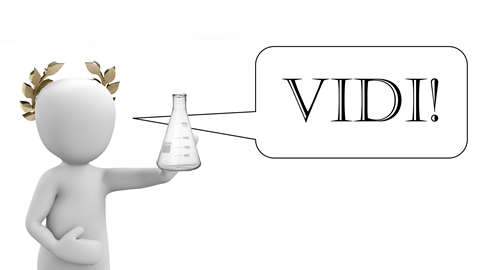Funding has been awarded to the Vidi projects of eight members of the NVBMB and the KNCV. With a maximum of €850,000 each, the researchers can develop their own innovative line of research and set up their own research group.
The Vidi grant scheme is aimed at researchers who have already conducted several years of postdoctoral research after obtaining their PhD. They must have demonstrated their ability to generate and successfully develop innovative ideas independently. They can develop their own innovative research project and appoint one or more researchers to work on it. The grant currently amounts to a maximum of €850,000.
In this round, 149 out of 778 applications were approved. With 79 approvals, women slightly outnumbered men (70). Among those approved are four NVBMB and four KNCV members. Their projects are listed below. For details of all projects, please visit the NWO website.
Quantifying the impact of structural proteins on chromatin biophysics from the molecular to nuclear scale
Dr. J.M. Eeftens, Radboud University Nijmegen (NVBMB member)
Our DNA is tightly packed inside cells, and its organization plays a crucial role in controlling which genes are turned on or off. Proteins influence DNA organisation, impacting cell function, development, and disease. This project uses advanced imaging and biophysical techniques to study how these proteins interact with DNA and affect organization. Understanding these mechanisms will provide new insights into gene regulation, cell behavior, and potential links to diseases such as cancer.
Neuromorphic vision sensors for single-molecule bioimaging
Dr. K.S. Grußmayer, Delft University of Technology (NVBMB member)
Life is dynamic and everything is in motion. To reveal the mysteries of life, we need to look very closely at the tiny molecules that make up our body and determine how they are moving and interacting with each other. At the moment there is no microscope that can determine those small details fast enough. Researchers will use a new, super-fast and smart camera that sees exactly when something is moving or changing, rather than taking continuous images like a regular camera. This will allow them to make better images at higher-speed.
Patterns of Stress Resilience: Beneficial Microbes Tailoring Root Cells
Dr. D. Kawa, Utrecht University (NVBMB member)
Soil-inhabiting microbes can induce changes in root cells, that forms protective layers from drought, floods and pests. The researchers will study which set of microbes is required for best-protected roots and how can we strengthen their interactions with crops. This knowledge will help developing “root probiotics” making crops resilient to harsh environments.
CAM-code: unravelling the molecular code of synapse formation in our brain
Dr. D.H.M. Meijer, Delft University of Technology (NVBMB member)
Bridging the synaptic gapOur brains contain billions of neurons that communicate through connections called synapses. These synapses pass signals efficiently from one neuron to another, making complex brain functions possible. However, we still understand surprisingly little about how synapses are formed at the molecular level. In this project, researchers are zooming in on proteins that help neurons form synapses, using state-of the-art microscopy. They will study how these proteins are organized and how disease-linked mutations affect their function. This will help reveal the nanoscale principles that allow neurons to connect and how this process can be disrupted in disease.
Good Vibes – Boosting Catalysis by Dynamic Stress
Dr. M. Monai, Utrecht University (KNCV member)
Catalysts are key to a greener chemical industry, as they accelerate chemical reactions and can lower overall energy consumption. However, their performance is limited under steady conditions. This research explores a new approach to boost catalysis, using dynamic stress to stretch catalysts at high frequencies (100–1000 Hz). The team has recently proven that catalytic activity for hydrogen production increased by a factor of 30 using this method. In this project, the researchers aim to understand how the stimulation works, and how it affects catalysts selectivity and stability in CO₂ conversion reactions key for the green chemistry transition.
Autonomous and responsive inks for next-generation energy nanomaterials (INKS)
Dr. L. Protesescu, University of Groningen (KNCV member)
Creating efficient, affordable, and durable materials for energy technologies is a challenge. Traditional methods require complex layers of different materials, which can be costly and limit device performance. To simplify this, I aim to develop a one-step process using smart inks that react to pH, temperature, or pressure to create multilayered, stable thin films. The ink will contain perovskite chalcogenide nanomaterials, which combine the benefits of traditional perovskites with enhanced resistance to heat, moisture, UV exposure. This process will streamline production, improve device efficiency, reduce energy use, and make them more durable—ultimately advancing energy technologies for a sustainable future.
Catalyst development for sequence-controlled copolymerization of olefins and CX2.
Dr. A.A. Thevenon-Kozub, Utrecht University (KNCV member)
Plastics are everywhere, but most were designed for performance and persistence—not recyclability. This leads to growing environmental challenges. While finding solutions to the current plastic pollution is crucial, we also need to rethink how plastics are made. This project develops innovative catalysts that can control the structure of polyolefins (the most common plastics), making them easier to recycle and break down. By introducing specific building blocks, we aim to create plastics with built-in circularity, reducing waste and pollution. Our approach paves the way for a new generation of sustainable materials that balance performance with environmental responsibility.
Healthy sugars for a healthy gut: Synthetic strategies towards complex exopolysaccharides
Prof. Dr. M.T.C. Walvoort, University of Groningen (KNCV member)
Bifidobacteria produce a unique extracellular sugarcoat containing specific polysaccharides that promote a healthy gut. Current methods to isolate the polysaccharides suffer from low yields and purities, hampering necessary structure-response studies, and ultimately the development of polysaccharide-based therapeutics. In this project, the researchers will develop effective methods to make these polysaccharides in high purity for the first time, which will transform the research on probiotics. Having pure polysaccharides in hand enables our understanding of the bifidobacterial health effects on the intestine and inflammation.













Nog geen opmerkingen